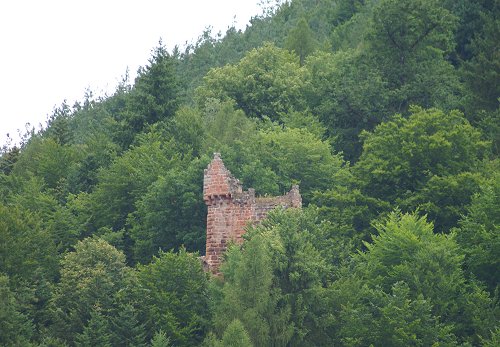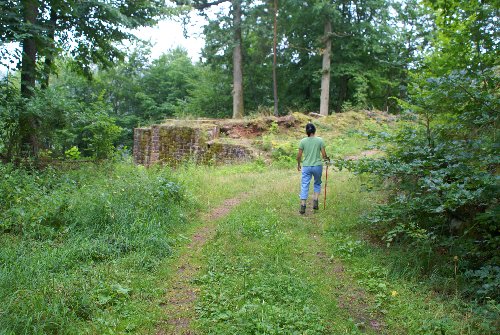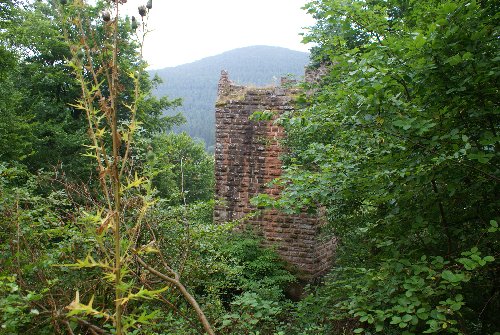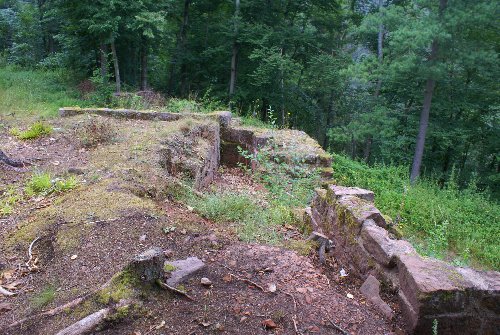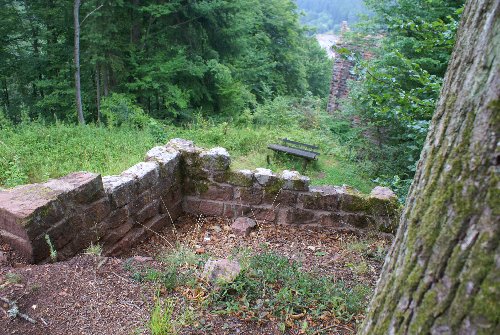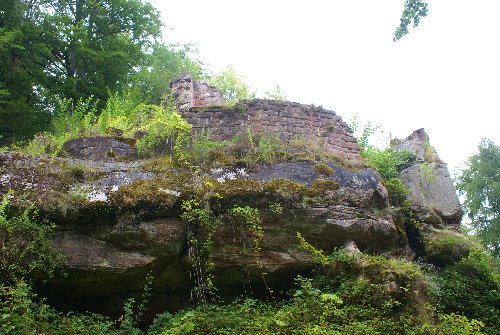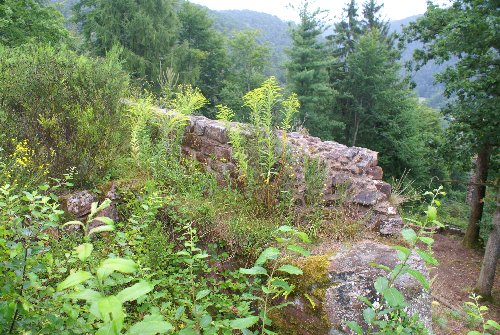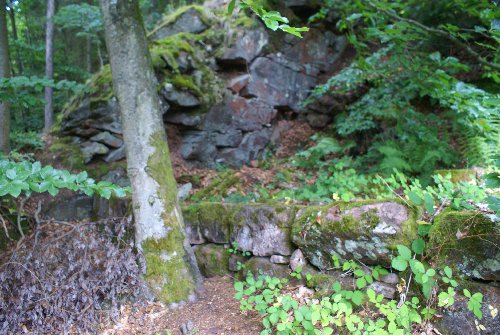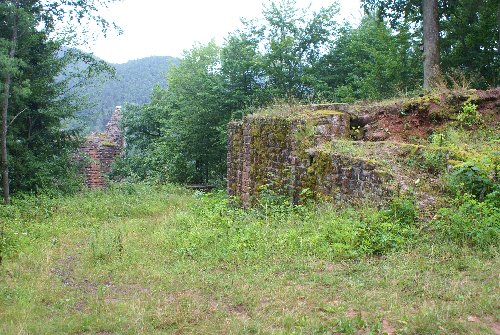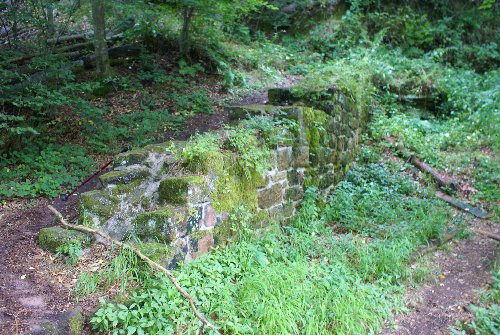Breitenstein does not appear much, and the only reason we went to check it out was because it was close to several other castles already explored. As we were nearby we figured it didn't hurt to look into it. The weather was cool and rainy, a light drizzle and occasional burst of light rain... a typical early summer weather pattern for Germany.
But Breitenstein was deceptive on the surface, for within was waiting an interesting surprise! These photos were taken in 2008.
Left, moving into what was the outer ward. This section of the castle was on virtually the same level as that of the keep. Typically, when castles were built along such slopes, the keep was placed above the rest of the castle with a curtain wall to protect it from attack from above. In this case, the keep was positioned in reverse, largely because it was built on a sandstone outcrop.
Breitenstein may have been built as a double castle by the Counts of Leiningen, primarily to protect the land from encroachment from the land of Speyer. The exact date of construction is unknown, but mention of the castle occured in 1257. The castle may have been destroyed as early as 1470 during a war between Zweibrucken and the Palatinate. As two castles, the lower structure had no keep, but instead used a curtain wall to protect it from attack. The upper castle had a keep, but today almost the entire upper castle is gone.
There is not much left of the upper castle, and when we first moved among the remains of the structure we were disappointed. "Is this it?" we asked.
The upper castle did have several levels built along the natural layers of the terrain. As we worked our way around the remants we eventually found a small trail that led down to the lower castle.
